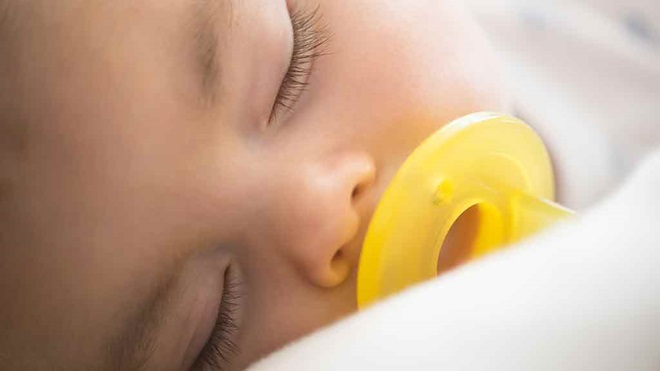Whoever came up with the saying "sleeping like a baby" must have had one of those one-in-a-million babies that sleep, eat and poop on schedule. For the rest of us, whose precious bundles of joy demand hours of patting, rocking, "shshhhing" and pleading, there are dummies and pacifiers, which can help comfort and settle your bub (and your sanity). There is also some evidence that they could reduce sudden infant death if used consistently.
Our guide gives you advice on what to look for when buying a dummy, or pacifier. There's no current CHOICE review of this product.
On this page:
- Tips when using dummies
- Things to consider when buying dummies
- Do they make the Standard?
- Are dummies safe?
We're on your side
For more than 60 years, we've been making a difference for Australian consumers. In that time, we've never taken ads or sponsorship.
Instead we're funded by members who value expert reviews and independent product testing.
With no self-interest behind our advice, you don't just buy smarter, you get the answers that you need.
You know without hesitation what's safe for you and your family.
And you'll never be alone when something goes wrong or a business treats you unfairly.
Learn more about CHOICE membership today
Tips when using dummies
The Red Nose charity, which aims to prevent sudden infant death, says there is some evidence that dummies may reduce sudden infant death if used consistently and once breastfeeding is established (if the baby is breastfed). It has some useful dummy usage tips including when to start (and stop) using a dummy.
Other dummy safety tips include:
- Always check dummies before using. Pull firmly on the teat and tug the handle and ring to check they don't give way under pressure. Also check the teat regularly – if you see holes, tears or bite marks, throw it away.
- Don't store dummies in direct sunlight as it can cause the rubber, latex or silicone to deteriorate.
- Sterilise dummies or wash them in hot soapy water, then rinse and air-dry. Follow the manufacturer's instructions.
- Have clean spare dummies on hand.
- Be aware that if your child can remove their dummy, they are more likely to try to place the entire dummy in their mouth.
- Avoid using dummies once your baby starts developing teeth. Chewing may cause the teat to tear and separate from the shield, becoming a choking hazard, or poke holes in the teat, allowing in bacteria.
- Never tie a dummy on a string or ribbon around your baby's neck, or to a cot, pram or other equipment, as this is a strangulation hazard. If you must, use a dummy chain that meets the safety requirements.
- Never dip the dummy in sweet foods or drinks, as this can cause tooth decay.
- Babies' dummies and chains with unsafe decorations – such as crystals, beads or other ornaments – are banned. These decorations could come away and become a choking hazard.
Things to consider when buying dummies
Ventilation holes
Check that the dummy has two or more ventilation holes on the shield to prevent suffocation if your child gets the whole dummy into their mouth.
Strong construction
A teat that comes away can cause your baby to choke. Check the dummy before each use.
Ring or handle
Both will help you hold the dummy easily.
Orthodontic vs cherry teats
Orthodontic dummies are flatter than traditional cherry-shaped dummies. Orthodontic dummies are shaped to encourage your baby to suck in the same way as he or she does when breastfeeding.
Latex vs silicone
Most dummies have a silicone teat with a plastic or silicone mouth shield and handle. Latex dummies are generally softer and more flexible than silicone, but they don't last as long.
Do they make the Standard?
All dummies sold in Australia must meet a mandatory safety standard, known as the Consumer Goods (Babies' Dummies and Dummy Chains) Safety Standard 2017. The law sets out the safety rules for dummies which are based on existing Australian standards for dummies (AS 2432:2015) and European standards for soothers. Dummy chains are also covered by the rules, and are required to meet European Standards for soother holders.
Are dummies safe?
Though we wish safety wasn't a problem, unfortunately (as with many baby products) there are design and use issues that could lead to problems for your little one. An unsafe dummy can choke, strangle or suffocate a baby, or could cause an infection.
The main hazards to watch out for are:
Choking and suffocation
Children under three years of age haven't developed the reflex action to cough up objects that lodge in their throats, and are vulnerable to choking. This can happen if the teat detaches from the shield of an old or poorly made dummy and gets stuck in their throat. If dummy shields are too small the child could get the entire dummy into their mouth, causing distress; and if the dummy doesn't have ventilation holes, it could block their airways, causing choking and suffocation.
Strangulation
Dummies that are attached to a chain or ribbon that can wrap around a baby's neck can be fatal. You should never tie a dummy on a string or ribbon around your baby's neck, or to a cot, pram or other play equipment. Like dummies, dummy chains are subject to mandatory safety standards, so look out for compliance to these when choosing a dummy chain.
Infection
Infants are easily susceptible to infection and this can occur when the dummy hasn't been cleaned properly or the teat allows saliva, food or other substances with bacteria to enter inside it. For the first six months you should sterilise dummies. After six months your child is more resistant to infections, so washing the dummy with soap and water is enough.
Stock images: Getty, unless otherwise stated.



